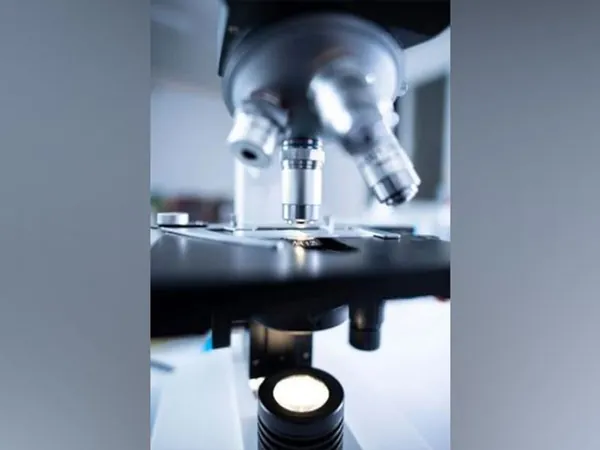
Nanopores: Revolutionizing Early Disease Detection and Personalized Medicine
2025-01-04
Author: Wei Ling
Nanopores: Revolutionizing Early Disease Detection and Personalized Medicine
Nanopore technology is emerging as a groundbreaking advancement in the relentless fight against diseases. From ancient herbal remedies to state-of-the-art medical innovations, human efforts to tackle illness have evolved significantly over time. Now, a cutting-edge diagnostic tool developed by researchers at the University of California, Riverside (UCR) is set to transform healthcare with faster and more accurate disease detection.
A Breakthrough in Diagnostics
UCR researchers have harnessed nanopore technology to create a diagnostic device that utilizes electrical signals from individual molecules to identify various diseases. The charm of this innovation lies in its unparalleled sensitivity, capable of extracting usable data from a single molecule. As Kevin Freedman, assistant professor of bioengineering at UCR, emphasizes, "This level of sensitivity could make a real difference in disease diagnostics."
How It Works
The technology employs a nanopore, an ultra-tiny opening through which molecules pass, one at a time. The device features electronic detectors that simulate neuronal memory to retain information about previously detected molecules. When a DNA or protein molecule passes through the nanopore, it causes a measurable decrease in ion flow, which the detector registers. Notably, the nanopore acts not only as a sensor but also as a filter, minimizing background noise and enhancing diagnostic precision.
The Promise of Early Detection
Imagine having a diagnostic kit no larger than a USB drive capable of identifying infections at their early stages. This dream is edging closer to reality, as Freedman predicts that nanopore sensors could detect infections within 24 to 48 hours—dramatically quicker than current tests which can take days. Early detection is crucial, particularly for rapidly spreading infectious diseases, allowing for timely interventions and more effective treatments.
Freedman also highlights the technology's potential beyond mere diagnostics. Subtle changes in protein structures can significantly impact health, and by measuring these variations, doctors could develop more customized treatment plans. Additionally, this nanopore technology brings researchers nearer to a long-sought objective in biology: single-molecule protein sequencing, which offers insights into gene expression and modifications in real time.
A Glimpse into the Future
Freedman envisions a future where nanopore technology is commonplace in research and healthcare, potentially even in home diagnostic kits. "I’m confident that nanopores will become part of everyday life," he states, highlighting the tool's capacity to advance personalized medicine.
Scaling the Technology for Broader Use
While nanopore technology has flourished in research laboratories, efforts are underway to extend its applications into real-world settings. Researchers are currently working to miniaturize and mass-produce these devices, enhancing accessibility in clinics and fieldwork, as well as facilitating at-home diagnostics.
The technology holds immense promise for resource-limited environments, providing portable diagnostic kits that can deliver rapid and reliable results without the need for extensive laboratory equipment. This advancement could dramatically change healthcare delivery, particularly in outbreak-prone regions where timely diagnosis and treatment are critical.
In conclusion, as nanopore technology continues to evolve, it is poised to bridge the divide between pioneering research and practical, life-saving applications, ushering in a new era of precision diagnostics accessible to a global audience. The full study detailing these findings was published in the journal *Nature Nanotechnology*, solidifying its importance in the biomedical field.
Stay tuned as we witness this technological marvel unfold— the future of healthcare may very well hinge on the promise of nanopores!

 Brasil (PT)
Brasil (PT)
 Canada (EN)
Canada (EN)
 Chile (ES)
Chile (ES)
 Česko (CS)
Česko (CS)
 대한민국 (KO)
대한민국 (KO)
 España (ES)
España (ES)
 France (FR)
France (FR)
 Hong Kong (EN)
Hong Kong (EN)
 Italia (IT)
Italia (IT)
 日本 (JA)
日本 (JA)
 Magyarország (HU)
Magyarország (HU)
 Norge (NO)
Norge (NO)
 Polska (PL)
Polska (PL)
 Schweiz (DE)
Schweiz (DE)
 Singapore (EN)
Singapore (EN)
 Sverige (SV)
Sverige (SV)
 Suomi (FI)
Suomi (FI)
 Türkiye (TR)
Türkiye (TR)
 الإمارات العربية المتحدة (AR)
الإمارات العربية المتحدة (AR)